CAA News Today
CAA Receives NEA Grant for ARTspace
posted by michaelh — August 11, 2017

CAA has been awarded a $25,000 Art Works grant from the National Endowment for the Arts to support the next installment of ARTspace, taking place during the 2018 Annual Conference in Los Angeles. Spearheaded by CAA’s Services to Artists Committee, ARTspace is a forum for programming designed by artists for artists that is among the most vital and exciting aspects of the conference. Held at each Annual Conference since 2001, ARTspace is intended to reflect the current state of the visual arts and arts education. The grant is the NEA’s ninth consecutive award to CAA for this event.
ARTspace offers free program sessions and includes diverse activities such as the annual Distinguished Artist Interviews—most recently with Coco Fusco and Katherine Bradford at the Annual Conference in New York last February—and screenings of film, video, and multimedia works in the Media Lounge. Also hosted in ARTspace are live performances and panel discussions that facilitate a conversational yet professional exchange of ideas and practices designed to engage CAA’s artist members as well as the general public.
ARTspace programming for 2017 included sessions on economic fairness and internet activism, artists who collaborate with their families, alternative career paths for artists outside the studio and academia, and a roundtable on artist-run institutions. CAA’s 106th Annual Conference will take place February 21–24, 2018, at the Los Angeles Convention Center and at schools, museums, and other institutions throughout Southern California.
Jane Chu, chairman of the NEA since 2014, has approved over $84 million to fund nearly 1,200 projects and partnerships in all fifty US states in the NEA’s second major funding announcement for fiscal year 2017. The Art Works category focuses on funding the creation of art that meets the highest standards of excellence, public engagement with art, lifelong learning in the arts, and strengthening of communities through the arts. Through grants to thousands of nonprofits each year, the NEA promotes opportunities for people in communities across America to experience the arts and exercise their creativity.
For the full list of 2017 Art Works grants visit the NEA website.
Lev Manovich in Conversation with Hunter O’Hanian
posted by michaelh — July 18, 2017
—Lev Manovich on living in Chelsea
| Hunter O’Hanian: | Hello everyone, I’m Hunter O’Hanian and I’m the Director of the College Art Association, and I’m here today to chat with Lev Manovich. Hello Lev. How are you? |
| Lev Manovich: | Great. |
| Hunter O’Hanian: | Yeah. Nice to see you. Thank you for welcoming us to your home here in Chelsea, in New York. |
| Lev Manovich: | I’m honored. |
| Hunter O’Hanian: | Well, it’s great to be here. It’s great to be out on the roof of your house and how long have you lived in this neighborhood in New York? |
| Lev Manovich: | Before I was a professor in the art department of University of California, San Diego, between 1996-2013 when I was offered the job as a professor for the Graduate Center CUNY, I rented this place and I love it because all the blue-chip galleries are right next door. If I want, I can go in my pajamas to the Gagosian or Pace. |
| Hunter O’Hanian: | How great that you just get to go out in your pajamas and go to Pace, or Gagosian or wherever. Okay, so you got your PhD from the University of Rochester. You got your MA from NYU, you got your BA from there as well, too. What I think is really interesting is that you have degree from the Moscow Institute of Architecture that you got in 1977 and ‘79. In addition, you’ve won many awards including the Mellon Fellowship in Art Criticism, you won a Guggenheim in 2003. |
| Let’s circle back to your time in Moscow. What was that like? When you were there, Leonid Brezhnev was the head of the Soviet Union. What was that like as a young scholar? | |
| Lev Manovich: | 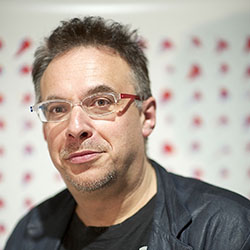 When I left in the early ‘80s, I was 21. I wasn’t a scholar yet. So, I didn’t get to finish with the Institute. I would have spent two more years. I grew up in the ‘70s, which was the final phase of the Soviet Union and the whole Communist system, and looking back I am so, so glad that I grew up out of this crazy different planet. Because here, when you come to the States, especially at that time, everything was so different. When I left in the early ‘80s, I was 21. I wasn’t a scholar yet. So, I didn’t get to finish with the Institute. I would have spent two more years. I grew up in the ‘70s, which was the final phase of the Soviet Union and the whole Communist system, and looking back I am so, so glad that I grew up out of this crazy different planet. Because here, when you come to the States, especially at that time, everything was so different.
I think this experience of growing up there is completely responsible for my whole career. Because I think when I look at contemporary, let’s say culture, since that time, because of … and capitalism, and that really became dominant worldwide, I have my alien perspective. I think it helps me to see things in very strange ways. Another thing, which, of course, I miss a lot … during the time everything was forbidden, people published things in Samizdat, you couldn’t buy foreign books in bookstores, but people were still able to do independent culture. People would have exhibitions of art in their apartment. Somebody would call you and say, “Go to this apartment,” and the exhibition would last five hours. Because everything was forbidden, when people were able to do something like this, you knew when to go to them, everybody just felt so excited. |
| Hunter O’Hanian: | Sure. |
| Lev Manovich: | Whereas today, I think we have abundance of information, opportunities, exhibitions…. There are so many galleries in New York. There are hundreds of art being noticed. You can follow any artist online and I am always surprised with my students who don’t take advantage of it. Because, for me, growing up in a country where there was information hunger. I love internet. I love Instagram. Basically, what I do before I go to sleep, I read Wikipedia. |
| With abundance of information, the fact that I can find out about so many things and I can also see what artists are creating in tens of thousands of cities around the world, from my computer, it’s absolutely amazing. |
| Hunter O’Hanian: | That’s wonderful. You’re now a professor to Graduate Center CUNY and you’re the Director of the Cultural Analytics Lab, which was founded in 2008. From what I’ve read, you developed the concept of cultural analytics in 2005. Tell us, what is cultural analytics? |
| Lev Manovich: | In the middle of 2000s, this new term “digital humanities” started to become more and more popular, and in this decade it has really been very widely discussed in my Academy. Just as today, at the time, people were starting to use computational tools to analyze, let’s say culture. Not looking at certain novels, but ten thousand novels, and there is a cultural scale…. The focus of this work has largely been literature. |
| When I saw it I said, “Well, we kind of need a different term to indicate, but we also want to apply these methods to study the history of culture, the history of art, history of visual media, and also contemporary media, whether it is web design, Instagram, photography.” I come up with a term and today there are hundreds of others’ papers, where people analyze, for example, social media or visual social media with papers done by people in Computer Science, Computational Social Science, Visual Anthropology, Visual History, and also recently merging to field of paradigm of visual history. | |
| I think what I started was, really, just a few papers and now I can use this term more like an umbrella to describe this research, which includes not only publications in academic journals, but also art projects, exhibitions, software people share online. Today research, the research outputs or research tools, also includes software data sets. Let’s say Google has this amazing cultural institute and curate these beautiful exhibitions of images. It’s also very cultural analytics. | |
| I would say its use of computation, not always to analyze. It’s a visual media or artistic media, but also to teach it and also to create new interfaces for interactive media. | |
| Hunter O’Hanian: | One of the research questions that you pose in the lab is, “How can we observe giant cultural universes of both user-generated and professional media content created today without reducing them to averages, outliers, or preexisting categories?” How has your research developed in that area? |
| Lev Manovich: | I think when I started, I was so fascinated with within a couple of years, the number of cultural producers and visual artifacts re-created, exploded a universe that grew after The Big Bang, so to speak. Let’s say, before, people were writing about Italian Renaissance or 1940s Hollywood cinema. Basically, we have a limited number of artifacts, limited number of artists, and you can kind of observe it, in a way, with your own eyes. In 2005, when people started sharing things on Flickr and on YouTube, and Instagram and Twitter and so on. Today, people are sharing over two billion images per day. |
| Hunter O’Hanian: | That’s amazing. Two billion a day. |
| Lev Manovich: | Yeah. It’s growing. |
| Hunter O’Hanian: | Wow, amazing. |
| Lev Manovich: | There is no way for you to observe it with your own eyes. I find this a great challenge but also find it was fascinating. The only way for me to see, for example, what was the different content people create, what are different styles? In the case of photography, what are photographic techniques? In a way, it’s like this invisible world because it’s too big. If I use something like telescope, microscope, I can only see so much. I said, “Well, it’s not like I like computers so much, I do; but I have to turn to computers, the techniques of computer science, just to be able to see what is out there.” |
| It’s particularly important if you don’t start with some preexisting categories. Because, let’s say you say, “Okay, I want to look at contemporary Instagram, using categories like Selfie, Portrait, Still Life,” but we don’t know what other genres are out there. We don’t know what kind of hybrid genres. I said, “As opposed to starting with particular categories and training the computer to find images in these categories, if I do it, I am only going to confirm what I already know.” | |
| For me, Cultural Analytics is basically about questioning everything we know, so using that challenge of big data to question what we know. I said, “What I actually want to do is not necessarily statistics but visualization, I want to sample this universe. I want to bring thousands or millions of images before my eyes.” Even I, myself, am going to see all kinds of interesting patterns, which perhaps don’t fit in these categories. It is really about observing in a very precise way. | |
| You can also connect it to workings of our history, Heinrich Wölfflin… created this new method, which our historians use throughout the century in comparing images on two slides. How you can compare billions of images? I see Cultural Analytics, in a way as an extension of comparative methods in humanities. | |
| Hunter O’Hanian: | You also look in the lab about how you use data to measure diversity, variability, differences in temporal changes in these cultural data sets. What are some conclusions you’ve drawn from that as well? |
| Lev Manovich: | We look at everything from cartoons, films, TV series, posters, book pages, Time magazine covers, one million Manga pages, one million artworks from DeviantArt, 50 million Instagram photos. I said, “So these are all very different types of visual culture.” If I’m to develop some methodology, which I can teach to students, in general, right, what we should look at? For example, if we look at visual art, we talk about topics, style, et cetera. If we’re looking at literature, we can look into other things. |
| Abstract from these media-specific categories, what else? I said, “Well, we could talk about how certain point of culture developed over time and we use computers that allow us to see, keep track of these changes. We can take different data sets and compare them.” For example, I want to compare a million paintings done in Brooklyn versus a million paintings done, I don’t know, in 798 in Beijing, but how do you compare those on a scale? | |
| When we can think about our ability … so you say, “Okay, there is a particular genre of selfie.” There are millions of selfies, which are very close or very far from the genre, so you think of a particular genre or a particular idiom. All right? Let’s say 19th century still life. When you consider it all works in terms of how close to the center it all is and finally because of diversity. We talk about the ability, it’s like statistics, right? How far a particular data point from average. With the ability, it’s more like ecology: how many different species of animals have you observed in this forest? | |
| Today if we observe, for example, something on Instagram, we’re not going to find a billion different species of images. We’ll maybe find 350, or maybe 1,000, or maybe 500. The same thing if you look at 19th Century painting or 16th Century art in China. Typically, our historians have been describing it in a very reductive way, saying, “Well, there’s four styles, there is four types.” What if I start saying, “Well, maybe it’s not four styles, maybe it’s 400 styles, or 40.” | |
| It’s not about throwing away categories, it’s gaining more categories. The way people do it in science, so biologists describe life on the earth, same with a hundred million species and be able to deal with it. What if I start dealing with 10,000 species of images? Why not, right? Basically, we’re bringing our reflection about using visual culture, a bit up to date to what is used. Actually, I will tell you, people able to look at things the more precise way, uniquely with distinctions. |
| Hunter O’Hanian: | Of course, using social media and a lot of the stuff that you do today, it’s great that you’re able to mix fine art and popular culture at the same time and the culture around everybody and bringing that in as to what their lives are about and you’re mixing those two things when you look at it. |
| Lev Manovich: | Well, I think it connects to another point, which we talked about right before we started. Today we have four billion mobile subscriptions. Not all of them are smartphones but there’s at least one billion people which have smartphones and they come with all this free software. Not only with, let’s say, again, but over 200 apps to aid images. Let’s say when I started doing digital art 30 years ago, you can put all the people who did digital art in one room. Then, let’s say, 20 years ago you could put them all … maybe 300 people. |
| Now, we have a billion people. The way we have one billion artists and one billion photographers and if you look closely you can find all kinds of things. You find things which are maybe very, let’s say, something or something will give a copy for somebody else, but you also find lots of diversity. What I want to do is I want to expose this diversity because I think, ultimately, if you’re to collect enough of a sample of contemporary art, perhaps you may find more diversity on social media because contemporary art you also have certain fashions, certain waves. | |
| Today we’ll have this in fashion, tomorrow … so we have this idea which comes from that … with art as something special, it’s a romantic, it’s the best of humanity, but today you don’t need to go to art school or design school to be artist and you can basically have viewers of your work on social media. | |
| Hunter O’Hanian: | Sure, and it creates an audience. |
| Lev Manovich: | Yeah, so I think intellectuals tend to dismiss it as something trivial, something banal, well, that’s not being intellectual. We want to take it seriously. |
| Hunter O’Hanian: | Yeah, no, that’s good. You brought Instagram up a few times. How many followers do you have on Instagram? |
| Lev Manovich: | Basically, last year I was writing this book about Instagram. I would observe something, write a chapter, I have those chapters on my website. When I do this research over about three years, I basically figure out some principles, whether it has to do with how many followers, but there are also thousands of articles about it. |
| My case, I didn’t follow those rules, so I only have a couple thousand followers. On Twitter, I also read about … I read, for example, research that says if you want to be retweeted, you have be between 110, 140 characters. I follow statistics even … to Tweet, so Twitter I follow all the rules so I have over 20,000. | |
| Hunter O’Hanian: | Wow. |
| Lev Manovich: | I follow the rules, but then of course, limited to what you can say. |
| Hunter O’Hanian: | Sure. Obviously you’re coming into contact with a lot of students these days and a lot of people who are either art makers or scholars or thinking about digital media. What kind of advice do you have for people entering the art world, whether they’re creative or whether they’re writing, what would you tell them? |
| Lev Manovich: | Well, I hope people are not entering the art world, I hope they’re entering the cultural world. |
| Hunter O’Hanian: | Interesting. |
| Lev Manovich: | The art world is just a very small part of it. To be honest, I don’t know a single person which takes the contemporary art world seriously. |
| Hunter O’Hanian: | Okay. |
| Lev Manovich: | Yeah, because again, in my view, fields like design, science and food are more interesting, but that’s my opinion. To be an artist in the art world, it’s not the only choice anymore. I think with people who are young, I would say there are two reasons why I would recommend people to learn computer programming and a bit about data. First of all, this is a world believer. Production analysis, algorithms based on data are central to the contemporary world, as electricity was central to the … century, as steam engines were central to industrial world of 1820. |
| If you simply want to understand the world in which you live, but why will Facebook … how does the navigation system in my car work? You should basically have some computer literacy, data literacy, and should learn something about algorithms, basic programming, how to make a webpage, analyze data, give statistics. Otherwise, I don’t know if you can say very relevant things about the world today. | |
| Maybe artists’ or historians’ culture. The second thing, I think, for professional advancement, so the digital humanities started in early 2000s, in the last five or six years you see many, many jobs where people want somebody who does 19th-Century novel or 18th-Century theater plus, plus, plus, plus digital humanities. In this decade and for the next decade, this is something which actually would help you to get a job because the new thing—everybody wants it and most people don’t do it. | |
| Simply from this very practical point of view, our digital art history is something that should exist or something that’s probably started to around 2012. It’s very new. It will get bigger the way it happened in English or in literature, so I think if you’re entering the history, (1) it’s too young. Take some online class, learn a bit of programming, and also learn about things which are specific to art history, how the computer looks at images. Learn about computer vision. | |
| Because regardless of whether you’re using it in your work, in five years when you’re interviewing people will be asking, Do you know that?” You still will be doing it. Again, it’s not about giving up the mind, it’s not about giving up theory. It’s not about giving up analytical thinking, but it’s simply adding contemporary methods to the methods inherited over the last 300 years. | |
| Hunter O’Hanian: | You’ve been to many CAA conferences and it’s been great that you’ve spoken. I hope you get to come to another one. Our next one will be in Los Angeles in February 2018, so I hope you can come to that one as well. |
| Lev Manovich: | I appreciate it very much. The first time I was at CAA, I was still a student. It was in 1990, it was in Seattle. I actually met a couple people who became my best friends. |
| Hunter O’Hanian: | Fabulous, I love that. |
| Lev Manovich: | I’m very lucky that now I’m in New York. It stays in New York every other year, so I always come. I’m on the panels. People have to realize, it’s amazing that CAA exists because in most countries you don’t have anything like this. You maybe only have 200 art historians in Switzerland or we don’t have this organization. The fact that this is organization, you bring us together, we’re at conferences, job placement, there are all kinds of things you can develop. |
| Yeah, maybe we always complain that every organization is bureaucratic but it’s fantastic that CAA exists. I wish you guys all the luck, and I think we all should support it and it’s up to us if we don’t say something, it’s up to us to put it there. This interview, it’s fantastic, an interesting project, it also makes it more visual and more interactive. | |
| Hunter O’Hanian: | Thank you. |
| Lev Manovich: | Thank you so much. |
| Hunter O’Hanian: | Thank you for this great view and for inviting us to your roof here. It’s really great. |
| Lev Manovich: | Come anytime. We’ll drink some beers. |
| Hunter O’Hanian: | Okay, thank you. I appreciate it. |
Fair Use Events in France: A Recap
posted by michaelh — July 11, 2017
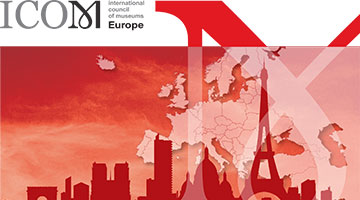 On June 4 and 6, CAA, represented by Hunter O’Hanian, participated in three events in France about CAA’s Code of Best Practices in Fair Use for the Visual Arts. The first took place on June 4 in Fontainebleau, when O’Hanian spoke at a session on “Fair Use and Open Content,” at the seventh annual Festival of Art History, held during the annual Fontainebleau Festival. Organized by Martine Denoyelle of France’s Institut National d’Histoire de l’Art (INHA), other speakers included Hana Leaper from the Paul Mellon Center for Studies in British Art (UK) and Mikka Gee Conway from the J. Paul Getty Trust. Approximately seventy-five people attended the session, which concluded with a lively discussion about copyright issues in France, the UK, and USA. To share the content of the Code of Best Practices as widely as possible, CAA produced a version in French translation that was available throughout the three day festival.
On June 4 and 6, CAA, represented by Hunter O’Hanian, participated in three events in France about CAA’s Code of Best Practices in Fair Use for the Visual Arts. The first took place on June 4 in Fontainebleau, when O’Hanian spoke at a session on “Fair Use and Open Content,” at the seventh annual Festival of Art History, held during the annual Fontainebleau Festival. Organized by Martine Denoyelle of France’s Institut National d’Histoire de l’Art (INHA), other speakers included Hana Leaper from the Paul Mellon Center for Studies in British Art (UK) and Mikka Gee Conway from the J. Paul Getty Trust. Approximately seventy-five people attended the session, which concluded with a lively discussion about copyright issues in France, the UK, and USA. To share the content of the Code of Best Practices as widely as possible, CAA produced a version in French translation that was available throughout the three day festival.
Read the Code of Best Practices in French
On June 6, O’Hanian was part of a panel about fair use during the annual conference of ICOM Europe, held at the Musée des Arts et Metiers in Paris. Titled “Copyright Flexibilities in the US and EU: How Fair Use and Other Flexibilities are Helping Museums to Fulfill their Mission,” the session also included Peter Jaszi, professor of law at the Washington College of Law, American University, and a principal lead investigator for CAA’s fair use initiative. The event was introduced Luis Raposo, president of ICOM-Europe, and included Ronan Deazley, Queens University, Belfast, Northern Ireland; Paul Klimpel, iRights Lab Culture, and ICOM Germany member; Claire La Henaff, Musée National Picasso (Paris), and ICOM France member; and Charlotte Waelde, Centre for Dance Research, Coventry University. Approximately one hundred museum professionals from countries throughout Europe attended the event.
Earlier the same day, CAA convened a small planning meeting to explore next steps in sharing the Code of Best Practices with decision makers in the EU interested in increasing copyright flexibilities. The Terra Foundation generously made their Paris offices available for the meeting, which included, in addition to O’Hanian and Jaszi, Francesca Rose from the Terra Foundation; Anne Goodyear, codirector of the Bowdoin College Museum of Art and chair of CAA’s Committee on Intellectual Property; Martine Denoyelle, Chief Curator of Heritage, Institut National d’Histoire de l’Art; Ronan Deazley, School of Law, Queens University, Belfast, N. Ireland; and Stef van Gompel, Faculty of Law, University of Amsterdam. The discussion focused on ways in which European countries were increasing access to information and images, including open access and fair dealing (in the UK), and the usefulness of gathering data about current EU practices in the use of copyrighted materials. The group plans to reconvene during the CAA annual conference in Los Angeles in 2018.
CAA’s participation in these events was underwritten by a generous grant from the Samuel H. Kress Foundation.
New in caa.reviews
posted by michaelh — June 30, 2017
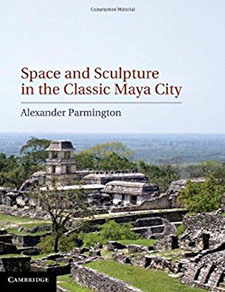 Kaylee R. Spencer reads Megan O’Neil’s Engaging Ancient Maya Sculpture at Piedras Negras, Guatemala and Alexander Parmington’s Space and Sculpture in the Classic Maya City. Both “introduce elements of time and space in discussing how Maya art and architecture operated and expressed meaning” and “focus on viewer experience as an essential feature of the ways art and architecture construct ideology and manipulate onlookers’ movements.” Read the full review at caa.reviews.
Kaylee R. Spencer reads Megan O’Neil’s Engaging Ancient Maya Sculpture at Piedras Negras, Guatemala and Alexander Parmington’s Space and Sculpture in the Classic Maya City. Both “introduce elements of time and space in discussing how Maya art and architecture operated and expressed meaning” and “focus on viewer experience as an essential feature of the ways art and architecture construct ideology and manipulate onlookers’ movements.” Read the full review at caa.reviews.
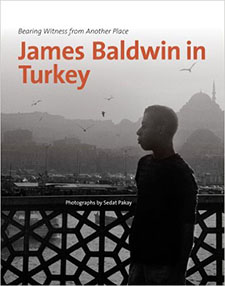 Meta DuEwa Jones reviews the exhibition catalogue James Baldwin in Turkey: Bearing Witness from Another Place, created by the Northwest African American Museum and “based on nearly thirty images of James Baldwin by Sedat Pakay.” Baldwin’s “intimate experiences in Turkey, documented in vivid and arresting images in the book, reveal these as equally important to the complex and composite picture of the artist.” Read the full review at caa.reviews.
Meta DuEwa Jones reviews the exhibition catalogue James Baldwin in Turkey: Bearing Witness from Another Place, created by the Northwest African American Museum and “based on nearly thirty images of James Baldwin by Sedat Pakay.” Baldwin’s “intimate experiences in Turkey, documented in vivid and arresting images in the book, reveal these as equally important to the complex and composite picture of the artist.” Read the full review at caa.reviews.
 Marisa Anne Bass discusses Trading Values in Early Modern Antwerp, edited by Christine Göttler, Bart Ramakers, and Joanna Woodall, and Jan van Kassel I (1629–1679): Crafting a Natural History of Art in Early Modern Antwerp by Nadia Baadj. The two “successful” publications “attempt to grapple with the question of why Antwerp should matter to the field at large, and they do this by engaging with two trends—the global and the material.” Read the full review at caa.reviews.
Marisa Anne Bass discusses Trading Values in Early Modern Antwerp, edited by Christine Göttler, Bart Ramakers, and Joanna Woodall, and Jan van Kassel I (1629–1679): Crafting a Natural History of Art in Early Modern Antwerp by Nadia Baadj. The two “successful” publications “attempt to grapple with the question of why Antwerp should matter to the field at large, and they do this by engaging with two trends—the global and the material.” Read the full review at caa.reviews.
New in caa.reviews
posted by michaelh — May 19, 2017
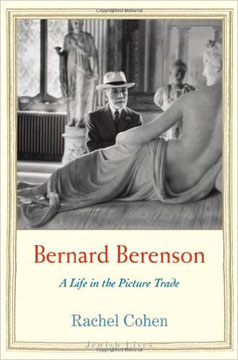 Ralph Lieberman reads Bernard Berenson: A Life in the Picture Trade by Rachel Cohen, “part of a Yale series of biographies entitled Jewish Lives.” In this “clear, concise, and gracefully written retelling of” Berenson’s life, the author “deals well with his contradictory attitudes and conversions from Judaism, but it is difficult to determine from her text exactly what she thinks his Jewishness meant to him.” Read the full review on caa.reviews.
Ralph Lieberman reads Bernard Berenson: A Life in the Picture Trade by Rachel Cohen, “part of a Yale series of biographies entitled Jewish Lives.” In this “clear, concise, and gracefully written retelling of” Berenson’s life, the author “deals well with his contradictory attitudes and conversions from Judaism, but it is difficult to determine from her text exactly what she thinks his Jewishness meant to him.” Read the full review on caa.reviews.
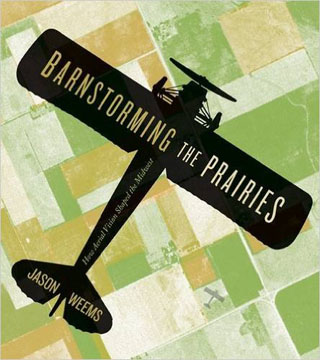 Mark White discusses Jason Weems’s Barnstorming the Prairies: How Aerial Vision Shaped the Midwest. Weems “provides an engaging and thoughtful analysis of how the elevated vantage point helped to create the modern Midwestern landscape and, in turn, informed the region’s identity.” Through case studies, he “explores how the aerial, synoptic view of the prairie fostered changes in the perception of that landscape.” Read the full review on caa.reviews.
Mark White discusses Jason Weems’s Barnstorming the Prairies: How Aerial Vision Shaped the Midwest. Weems “provides an engaging and thoughtful analysis of how the elevated vantage point helped to create the modern Midwestern landscape and, in turn, informed the region’s identity.” Through case studies, he “explores how the aerial, synoptic view of the prairie fostered changes in the perception of that landscape.” Read the full review on caa.reviews.
Gwendolyn Owns reviews the exhibition catalogue The Idea of the North: The Paintings of Lawren Harris. Organized by the Hammer Museum, the show “attempts to bring this star of Canadian art to the attention of a U.S. audience,” and “the beautifully produced catalogue . . . provides an in-depth examination of one brief period in the artist’s career” and “is a worthy addition to the literature on him.” Read the full review on caa.reviews.
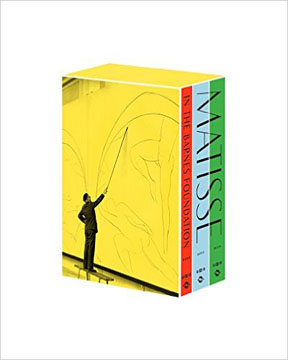 John Klein reviews Matisse in the Barnes Foundation, edited by Yve-Alain Bois. The volume reproduces and catalogues “every one of the Barnes Foundation’s fifty-nine artworks by Matisse” and “goes further,” providing correspondence, “three intellectually stimulating thematic essays,” and a “wealth of historical, biographical, artistic, and historiographic information derived from scrupulous research.” Read the full review on caa.reviews.
John Klein reviews Matisse in the Barnes Foundation, edited by Yve-Alain Bois. The volume reproduces and catalogues “every one of the Barnes Foundation’s fifty-nine artworks by Matisse” and “goes further,” providing correspondence, “three intellectually stimulating thematic essays,” and a “wealth of historical, biographical, artistic, and historiographic information derived from scrupulous research.” Read the full review on caa.reviews.
New in caa.reviews
posted by michaelh — May 12, 2017
John Hawley reviews Rembrandt’s First Masterpiece at the Morgan Library and Museum. The show provided “a rare opportunity to engage with Rembrandt’s painted Judas Returning the Thirty Pieces of Silver (1629) and the three surviving preparatory drawings associated with it.” Despite some “flaws in conception and execution,” the exhibition offered a “once-in-a-lifetime opportunity for visitors.” Read the full review at caa.reviews.
Laura Roulet visits Puerto Rican Light (Cueva Vientos) (2015), a site-specific installation created by Allora & Calzadilla and commissioned by the Dia Art Foundation. Set in a remote cave in Puerto Rico, the project “is a post-colonial inversion and commentary on the complicated state of U.S.-Puerto Rican relations” and “a way of putting Puerto Rico on the map for serious international art travelers.” Read the full review at caa.reviews.
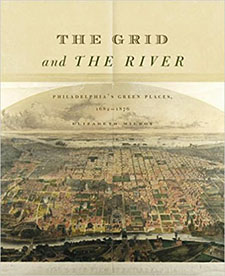 Eric Kramer reads The Grid and the River: Philadelphia’s Green Places, 1682–1876 by Elizabeth Milroy. An “authoritative and compelling portrait of how a city’s actual landscape fabric has been fashioned through a process of negotiating and representing a dominant idea about landscape’s place in American culture,” the volume builds “a more nuanced and positive image of how cities and landscapes coexist.”
Eric Kramer reads The Grid and the River: Philadelphia’s Green Places, 1682–1876 by Elizabeth Milroy. An “authoritative and compelling portrait of how a city’s actual landscape fabric has been fashioned through a process of negotiating and representing a dominant idea about landscape’s place in American culture,” the volume builds “a more nuanced and positive image of how cities and landscapes coexist.”
Through a generous grant from the Wyeth Foundation for American Art in 2014, CAA provided financial support for the publication of Elizabeth Murray’s The Grid and the River: Philadelphia’s Green Places, 1682–1876. Read the full review at caa.reviews.
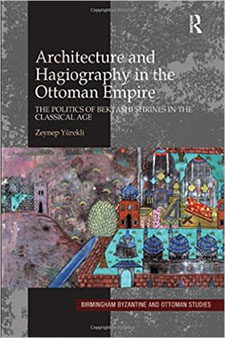 Maxime Durocher dicusses Zeynep Yürekli’s Architecture and Hagiography in the Ottoman Empire: The Politics of Bektashi Shrines in the Classical Age. “Combining a study of hagiographical texts with an advanced analysis of the sixteenth-century architectural transformation of two Anatolian shrines,” the author “provides an insightful study” that “contributes to the revival of Sufi studies.” Read the full review at caa.reviews.
Maxime Durocher dicusses Zeynep Yürekli’s Architecture and Hagiography in the Ottoman Empire: The Politics of Bektashi Shrines in the Classical Age. “Combining a study of hagiographical texts with an advanced analysis of the sixteenth-century architectural transformation of two Anatolian shrines,” the author “provides an insightful study” that “contributes to the revival of Sufi studies.” Read the full review at caa.reviews.New in caa.reviews
posted by michaelh — April 07, 2017
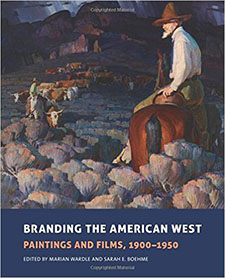 Matthew Hauske reviews Branding the American West: Paintings and Films, 1900–1950, edited by Marian Wardle and Sarah E. Boehme. This “lavishly illustrated exhibition catalogue” provides “a substantive conversation” about “the works and the legends of the Taos Society of Artists.” The book’s “spirit of scholarly collaboration and cross-pollination is perhaps its greatest strength.” Read the full review at caa.reviews.
Matthew Hauske reviews Branding the American West: Paintings and Films, 1900–1950, edited by Marian Wardle and Sarah E. Boehme. This “lavishly illustrated exhibition catalogue” provides “a substantive conversation” about “the works and the legends of the Taos Society of Artists.” The book’s “spirit of scholarly collaboration and cross-pollination is perhaps its greatest strength.” Read the full review at caa.reviews.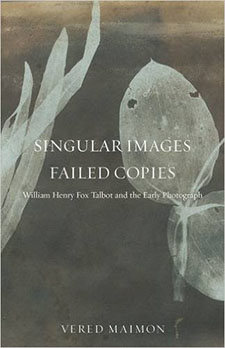 Katharine Steidl reads Singular Images, Failed Copies: William Henry Fox Talbot and the Early Photograph by Vered Maimon. The author investigates the artist’s “connection to early photography” and, “with the help of postmodern critical theory . . . questions established genealogies and canonical histories of photography.” The volume is ultimately “highly recommended to Talbot scholars.” Read the full review at caa.reviews.
Katharine Steidl reads Singular Images, Failed Copies: William Henry Fox Talbot and the Early Photograph by Vered Maimon. The author investigates the artist’s “connection to early photography” and, “with the help of postmodern critical theory . . . questions established genealogies and canonical histories of photography.” The volume is ultimately “highly recommended to Talbot scholars.” Read the full review at caa.reviews.Emma Chubb visits She Who Tells a Story: Women Photographers from Iran and the Arab World, organized by the Museum of Fine Arts, Boston. The “participating artists are all women” with ties to “the wide expanse of land between Morocco and Iran,” and the exhibition “contributes an important chapter to this history, one that centers on the rich conceptual, formal, and political engagements of these photographers.” Read the full review at caa.reviews.


